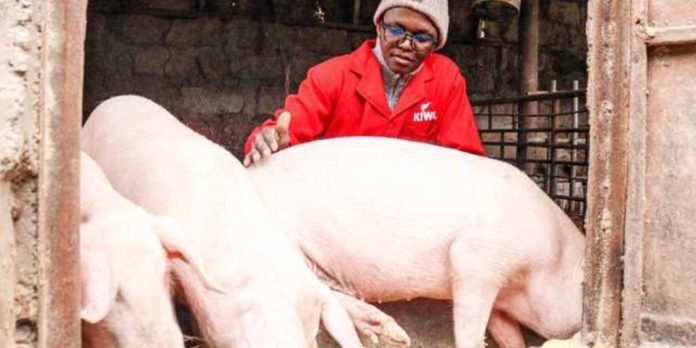In October 2024, Brian Maina decided to venture into agribusiness, investing in pig farming on his family farm in Gitaru, Kiambu County. From only three piglets, Maina currently manages 36 pigs.
“It all started with the need to have proper waste management from the greenhouse in the family farm. We had a system that produced a lot of organic waste, and I did not want it to go to waste. That was when I thought about pigs. They could help manage the waste and, at the same time, give me an income source,” he told Seeds of Gold.
Maina’s journey in pig farming started with only Sh17,000, which was partly used in the purchase of the animals and feeds.
His family farm had ready structures and facilities which aided his venture into one of the most profitable livestock businesses.
“At the beginning, yes. I had hired someone mainly to handle cleaning, while I did the feeding. But over time, I realized I wanted to be more hands-on, so I let him go. Right now, I am fully in it myself. It is not an easy task, however, it helps me understand my pigs better and manage them closely,” he says.
From just three piglets, about two months old, Maina’s farm currently hosts 36 pigs including 3 sows. He says that the animals have a fast growth rate if well taken care of.
“It is amazing how fast pigs can grow when managed well. In my business plan, the first year was to buy ready-made feeds. After the first year, I plan to start processing my own feeds such as maize jam to cut costs and have more control over nutrition,” adds Maina.
How I increased milk production from 7 litres to 38 litres per cow daily
Currently, the sows are on sow and weaner feed while piglets are on creep feeds and maize jam. On the other hand, the meat batch is on grower feeds.
According to Maina, one of the biggest challenge in pig farming is diseases. He says that pigs fall sick very easily and treating them can be costly. He emphasized the need for hygiene in the pens.
“I have learned the importance of proper hygiene and vaccination. I clean the pens daily, ensure they are dry, and I keep the pigs on a strict vaccination and deworming schedule. I also try to catch any signs of sickness early. Even with that, I had one so that fell ill, and treating her cost me over Sh8,000. It was painful, but it taught me to always be prepared with both knowledge and a budget for animal health,” he says.
While the venture has not yet started making money for Maina, he is optimistic that the returns will be rewarding. His main market target is local butcheries, restaurants, and households that want fresh pork.









